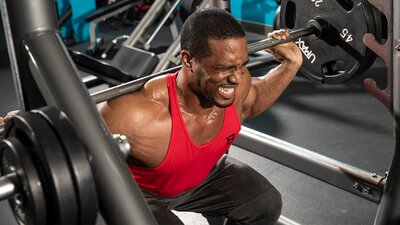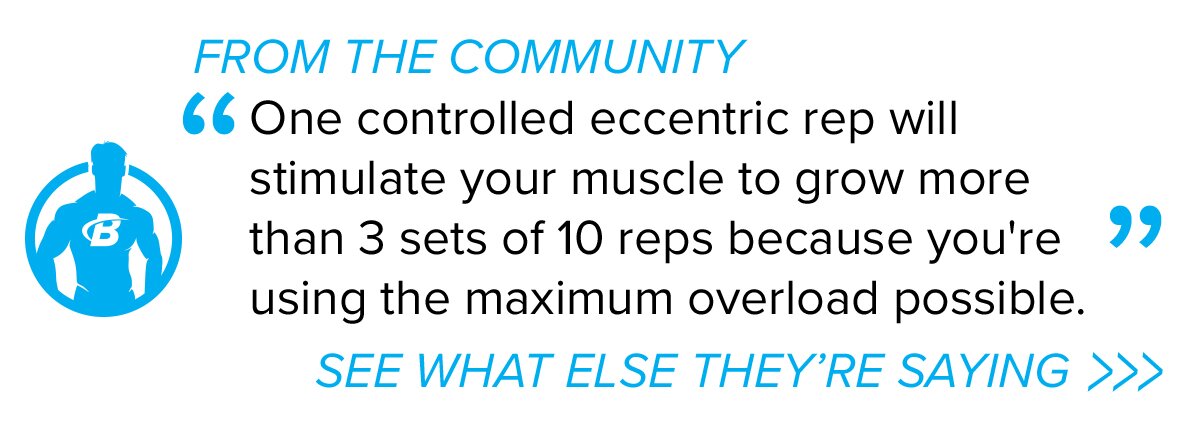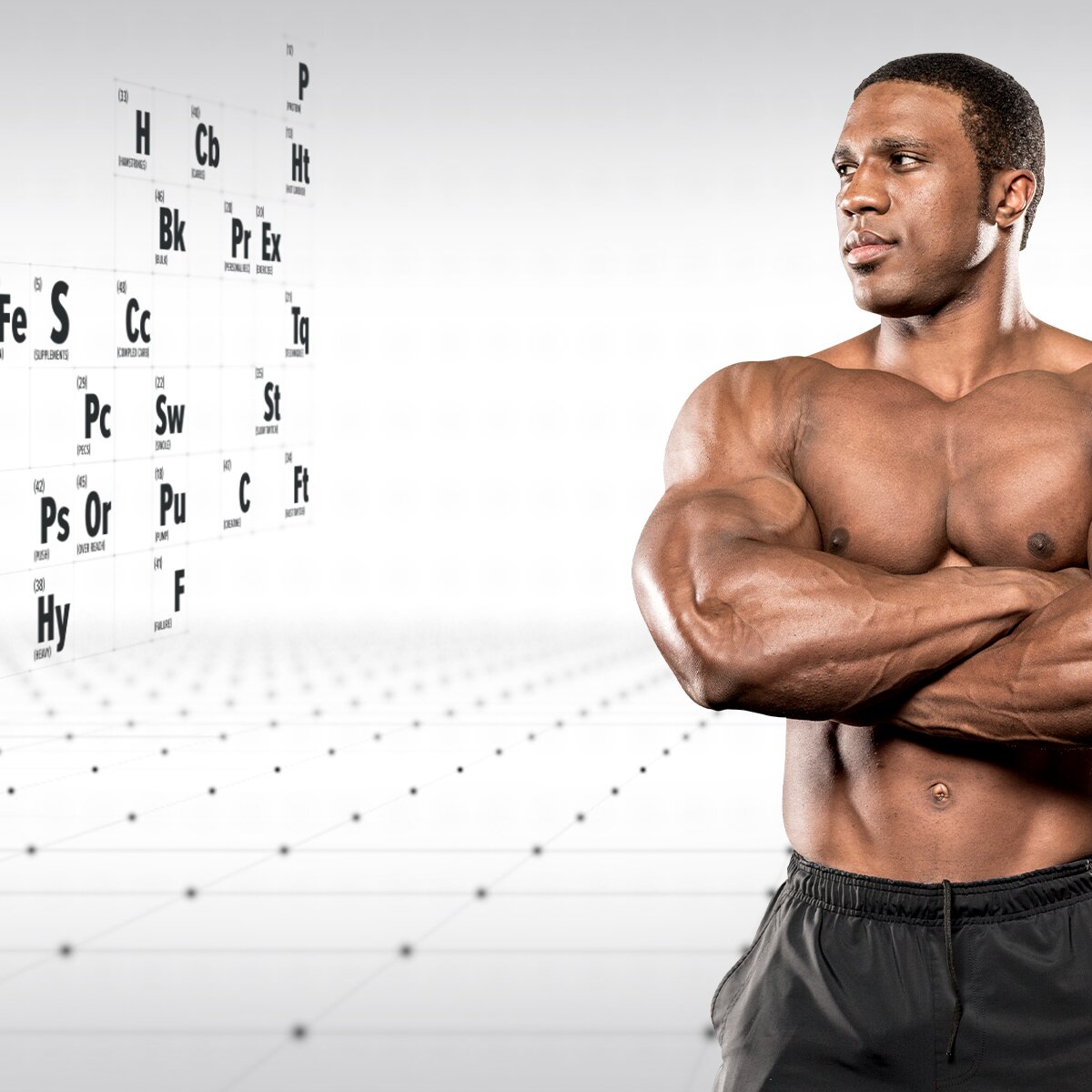
Muscular Hypertrophy: This Is How You Grow
Hypertrophy science is light-years ahead of where it was just a few short years ago. Maximize muscle growth by knowing the mechanisms that cause it in your training. Pull up a chair, because Mass Class is about to begin!
Muscular Hypertrophy | Sarcoplasmic Hypertrophy | Muscle Fibers | Nutrition for Muscle Growth
The most important, innovative work happening in bodybuilding isn't just taking place in the lab; much of it is exploring the line between hard science and so-called "bro-science," or what has been shown in the gym to work for generations. In many cases, hard science is the one catching up to what lifters have been saying all along!
Let's bring this sport—and your training—to a new level by spreading the word about how muscle is built and how your training can be optimized for gains.
How Does Muscle Grow?
At this point, the scientific literature has narrowed down how muscle grows to at least 3-4 different mechanisms. You'll hear people say, "Oh, such-and-such is the best training method," but that method might only maximize one of those mechanisms.
Different researchers have different ways of categorizing them, but here's what I consider the primary mechanisms of muscle growth. When you're training for maximum growth, arrange or "periodize" your training so you can optimize each of these mechanisms.
Cell Swelling
When you train and you get a pump, kind of like Arnold famously talked about in "Pumping Iron," your muscle cells sense that swelling as a threat. They basically say, "OK, I have to grow or die." So, they restructure themselves and get larger.
What are the methods to increase that blood to the muscle? Working in the hypertrophy rep range of 8-12 is one, especially with short rest period lengths. Overload techniques like strip sets, supersets, and working to failure are also ideal, if you use them properly.
Mechanical Tension
If you're looking to build muscle that's as strong as it looks, focusing on cell swelling isn't enough. You also need to amplify the tension, which is how you recruit the larger and more powerful muscle fibers.
You may have heard that we have slow-twitch muscle fibers, which are good for endurance, and then we have the larger fast-twitch muscle fibers. Those get recruited with heavier lifting. That repetition range could still be around 6-8 reps—I'm not talking about powerlifting, after all.
Of course, if you are lifting with short rest periods, you can't lift as heavy, so the mechanical stress is less. So, during your heavy days, rest for 3-5 minutes in order to maximize the mechanical load.
Creatine monohydrate helps produce gains in both strength and size, making it perfect for heavy lifting workouts. Take 5 grams per day, every day when growth is the goal.
Mechanical Trauma
You've probably heard about how when you train for hypertrophy, you create "micro tears" and tiny abrasions in your muscles, and that the recovery from these small injuries is how muscle grows. This is true, but it's not the only way to train for growth, it just happens to be the one that we relive the most vividly as delayed-onset muscle soreness in the days following.
Mechanical trauma, also known as muscle damage, occurs when you lower a weight or hit the eccentric portion of the lift hard. It can happen when you do things like forced eccentrics or negative reps, or anytime you work your muscles in a new range of motion. This is when you focus in on destroying the muscle.
Training with an emphasis on muscle damage and working to failure is definitely effective, but like anything, it can also be overdone. Use it as one of several tools in a balanced program, and you'll maximize the benefit you receive from it.

Metabolic Stress
Everyone knows that burning sensation you get when you're training. That is metabolic stress, which is another name for lactic acid building up in the muscle.
One of my colleagues, David Gundermann, Ph.D., took the novel step of isolating muscle cells and putting them in lactic acid. Guess what? They grew! The mechanism that causes that burning sensation can actually make muscle grow. This is one reason to keep your rest periods short on a hypertrophy day.
If you rest for 5 minutes, that clears out all that metabolic stress. This is part of the reasoning behind keeping rest periods short, like 60 seconds or less, or occasionally removing them altogether and doing supersets or strip sets.
The best pre-workouts help produce metabolic stress with fatigue-fighting ingredients like beta-alanine and caffeine. On a pump-focused day, it's a must.
HIIT Workouts: Cardio for Muscle Gains
One of the fundamental dichotomies of bodybuilding is gaining size and losing fat at the same time. To gain size you lift weights and to lose fat you do cardio. Simple enough, right? Yes, except that plenty of bodybuilders do hours of cardio every day, an amount on par with high-level endurance athletes.
What we found in our laboratory is that the longer you do cardio, the more muscle you lose. Why would you spend all this time in the off-season gaining muscle just to put it at risk? This is exactly the problem we've been trying to solve.
The answer is high-intensity interval training, or HIIT, as it's often known. When I say high intensity, I'm talking about 10-30 seconds of all-out, balls-to-the-wall sprinting. If you do it for 10 seconds, you should have nothing left at the end. After 30 seconds of work, you should feel like you're going to die.
Sounds miserable, right? But you'd better believe it's effective. We've found that with 10-30 seconds of all-out sprints, you can actually lose more fat in just a few minutes than with the long duration 30-60-minute cardio—and you maintain your size. We did a study in our lab where we compared low-intensity cardio to high-intensity cardio side by side, and not only did the sprinters lose more fat, they gained muscle in their quads!
Periodize Your Training to Avoid Injury
Periodization is programmed change, and it's one of the keys to avoiding injuries in the gym. Here's how it works: One day each week, you could perform traditional hypertrophy training, like 8-12 reps with 30-60-second rests; one day you might train heavy, in a 6-8 rep range with longer rests; another day, you could do a hypertrophy superset day; then, if you feel like your joints are hurting, you could try blood flow restriction training one day.
You can also periodize cardio, performing HIIT some days and more restorative steady-state cardio on other days.
Simply put: Focus on the goal and balance your training styles. Give your joints and muscles programmed rest periods, and you'll recover—and keep growing. Not sure how to program all of this yourself? Follow Project Mass, my comprehensive muscle-growth program in BodyFit.

